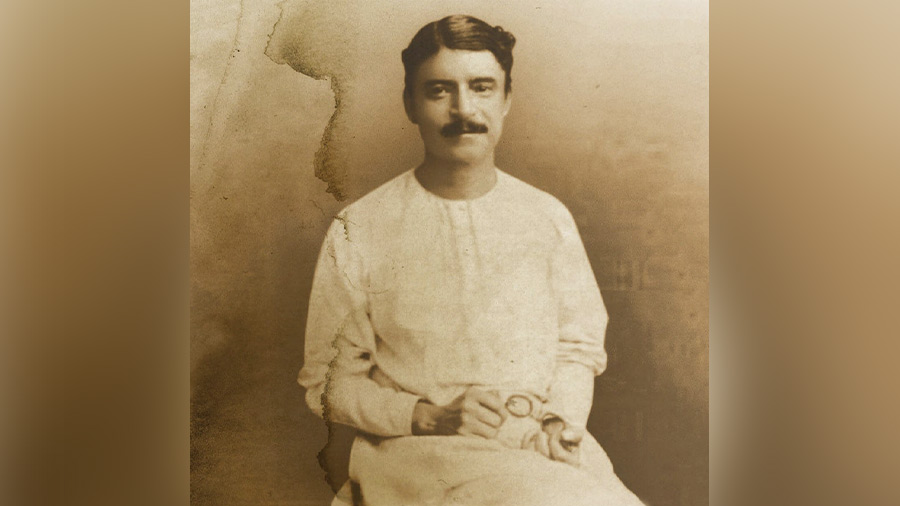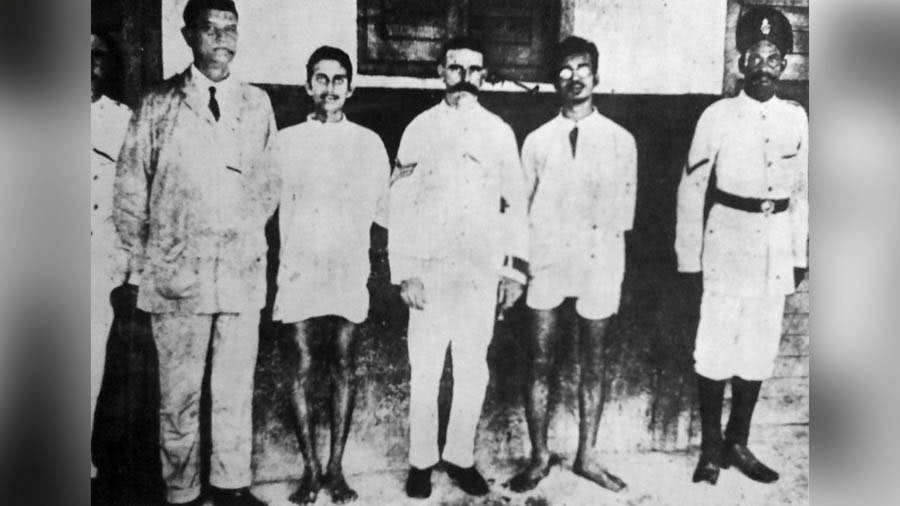কেশে মাখো কুন্তলিন
রুমালে তে দেলখোশ
পানে খাও তাম্বুলিন
ধন্য হোক এইচ বোস
(Ply your hair with Kuntalin,
In your handkerchief, pour Delkhosh
In your paan, have Tambulin
All hail H Bose)
No, the above lines are not penned by this reporter. But, they were very popular in the Calcutta of a hundred years ago, and the ‘H Bose’ referred to in the lines was a man who deserves to be remembered and idolised as an icon.
The Bose family of Mymensingh was an illustrious one. The patriarch Padmalochan had 3 sons – Hara Mohan, Ananda Mohan and Mohini Mohan. Ananda Mohan was India’s first wrangler (a student who has completed the third year of the Mathematical Tripos with first-class honors), one of the founding members of Indian National Congress and a leader of the Sadharan Brahma Samaj. Mohini Mohan was one of the first Indians to proceed to USA to qualify himself in field of homeopathy. Hara Mohan studied law and went on to become a munsif in government courts. One of his four sons was Hemendra Mohan, born in 1864.
Medicine’s loss; business’s gain
From a young age, Hemendra distinguished himself in academics. After clearing intermediate and BA, he joined Calcutta Medical College on the recommendation of his maternal uncle, Acharya Jagadish Chandra Bose, then a professor at Presidency College. It was at the laboratory of Presidency that a great misfortune befell young Hemendra, in 1890. An experiment went horribly wrong, resulting in an explosion that damaged his eyes. After six months of treatment, when his bandages were removed, he got back his vision, but the damage was enough to rule out a career in medicine.
But, medicine’s loss was business’s gain. Hemendra Mohan was a man of varied interests. Very soon, he was converting his passions into profession. And with astounding gains.
In 1894, he started his own perfumery business — H-Bose Perfumers at 62, Bowbazar Street. With positive responses to his perfumes, Hemendra Mohan expanded into other products like eau-de-cologne, lavender water, milk of rose, etc, as well as hair oil. He set up a manufacturing facility at Shib Narayan Bose Lane. He gifted to Bengalis possibly their first superbrands in personal care products — Kuntalin hair oil and Delkhosh perfume.
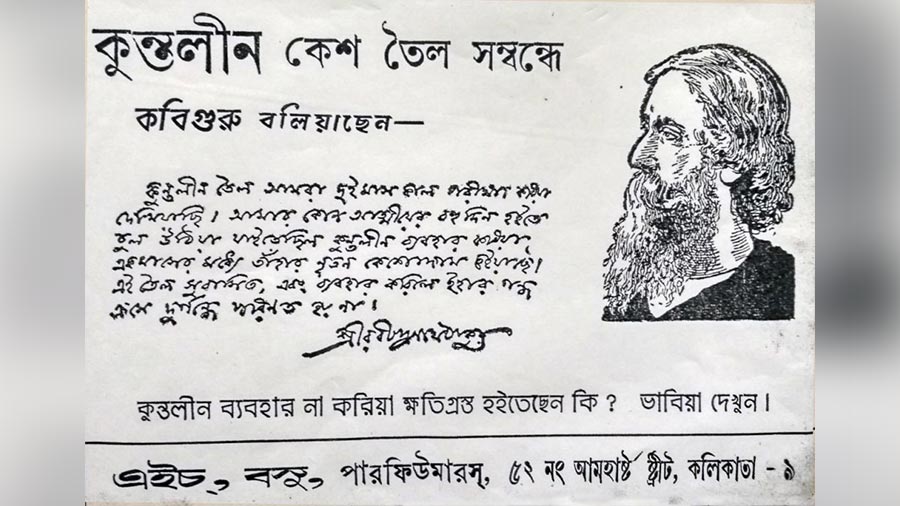
An advertisement for Kuntalin hair oil
Hemendra Mohan took active interest in literature, and around 1900, he established the Kuntalin Press next door to his perfumes factory and instituted the Kuntalin Award – India’s first literature award. His uncle Jagadish Chandra was the first recipient of the award for a short story. By this time, Hemendra Mohan had become passionate about learning to ride a bicycle. He also loved to teach others how to ride. Among his ‘students’ were Jagadish Chandra, Dr. Nil Ratan Sarkar and Acharya Prafulla Chandra Roy, to name a few. In 1903, he established India’s first bicycle manufacturing concern: H. Bose Cycle Company at 63/1, Harrison Road, in partnership with his younger brother Jatindra Mohan. Besides manufacturing cycles, Hemendra Mohan also took sole license of distributing English made Rover and Durcap cycles in India.
New interests
Soon however, Hemendra Mohan was consumed with interest about the latest marvel of technology: automobiles. In 1903, he imported from France, a Darracq 8HP single cylinder motor car, and another 2-cylinder Darracq in 1905. Using his cycle business experience, he opened up an automobile business at a huge building on Free School Street. The company was named Great Eastern Motor Works. He hired a British engineer named Mr. Preston as the chief supervisor of his car business. He took agencies of British-made Stoneley Sidley, Austin and Landlet cars. He was even in talks with Ford Motors for agency, but backed out as he didn't like the car and apparently called it an “ugly animal”.
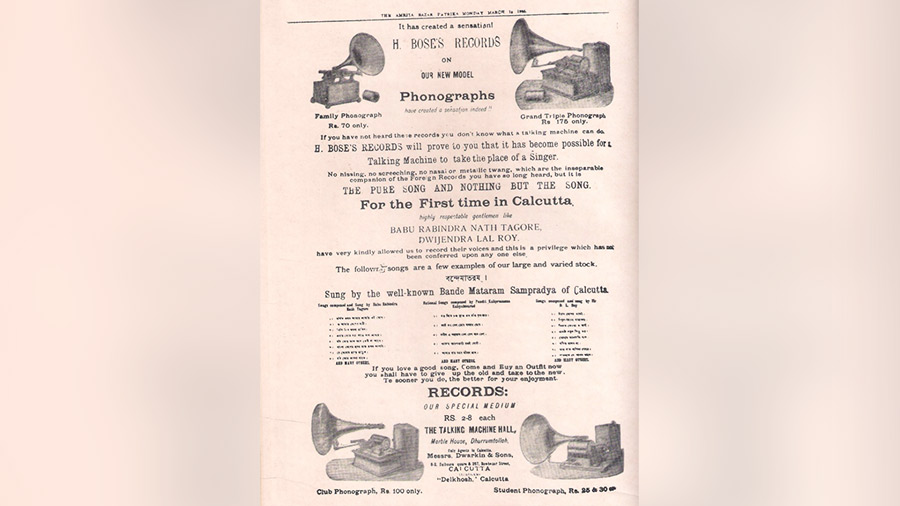
In 1900, Hemendramohan imported Edison’s phonograph machine. A new business idea had occurred to him. He opened up a business at Dharmatollah, naming it ‘Talking Machine Hall’. And like most things with Hemendra Mohan, business was soon booming. The house in Dharmatollah, where he had his office came to be known as Marble House, which witnessed recordings by Jagadish Chandra, Prafulla Chandra, Rabindranath Tagore, Dwijendra Lal Ray, Ustad Ramzan Khan, Lalchand Baral, Piyara Saheb, Niroda Bai, Manadasundari Debi.... the list is endless. His company, Bose Pathey Recording, released 21 albums of Tagore. Later on, his company was rechristened H Bose Swadeshi Records. By 1907, the demand for Bose records became such that Hemendra Mohan began manufacturing cylinder records.
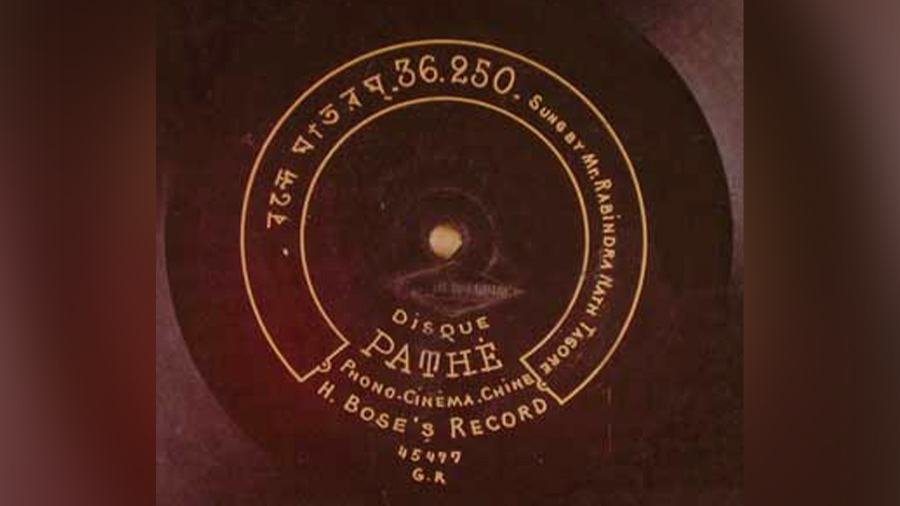
Bose Pathey Recording released 21 albums of Tagore
Unfortunately, Hemendra Mohan’s active support for the Swadeshi movement would deal a deathly blow to his gramophone business. A raid by the Calcutta police at his Dharmatollah office saw valuable records getting destroyed. At this time, the technology also was shifting from cylinder to disc records. Hemendra Mohan got in touch with Charles Pathey Records of Paris for conversion of cylinders to discs, but unfortunately with the Parisians now having increased interest in the growing motion picture business, the efforts didn’t bear fruit and his records company went out of business. Calcutta’s business circuit was not immune from the economic strains generated by World War I, and it led to Hemendra Mohan’s automobile business shutting shop.
Booming core business
But one thing that kept going from strength to strength was his perfumery business. He went on creating one brand after another – Tambulin as an additive in paan, Castorin castor oil, Aparajita scent, Cocolin bathing soap, Rose tooth powder – the list goes on. The patrons of Hemendramohan's products included Prafulla Chandra, Rastraguru Surendranath Banerjee, Lala Lajpat Rai, Motilal Nehru, the Maharajah of Natore to name only a few. It was said that the day began and ended with H Bose products - from tooth powder to laxative!
Another of Hemendra Mohan’s great passions was photography. He imported still cameras, color films and later, even motion cameras to pursue this hobby. He built a darkroom at his Bowbazar home where he developed films himself. In the first part of 20th century, Hemendra Mohan even experimented with 3D photography technology.

Hemendra Mohan Bose’s photograph of a Partition protest
In his personal life, he was a refined person, in love with life’s finer things. Two of these were tea and paan. To have ready access to best quality tea, he even bought a tea estate in Darjeeling. However, his love for paan would bring a great debacle to his life. Prolonged consumption resulted in ugly stains on his teeth. To get rid of the same, he underwent scraping at a dentist’s clinic. Two days later, Hemendra Mohan developed an infection in his gums and teeth that soon resulted in high fever. On 28th August, 1916, at only 52 years of age, this amazing man breathed his last from septic shock.
Bengalis have all heard it being said that they lack entrepreneurial spirit and courage. The perfect riposte would simply be to tell them the story of Hemendra Mohan Bose – after all, actions always speak louder than words.


